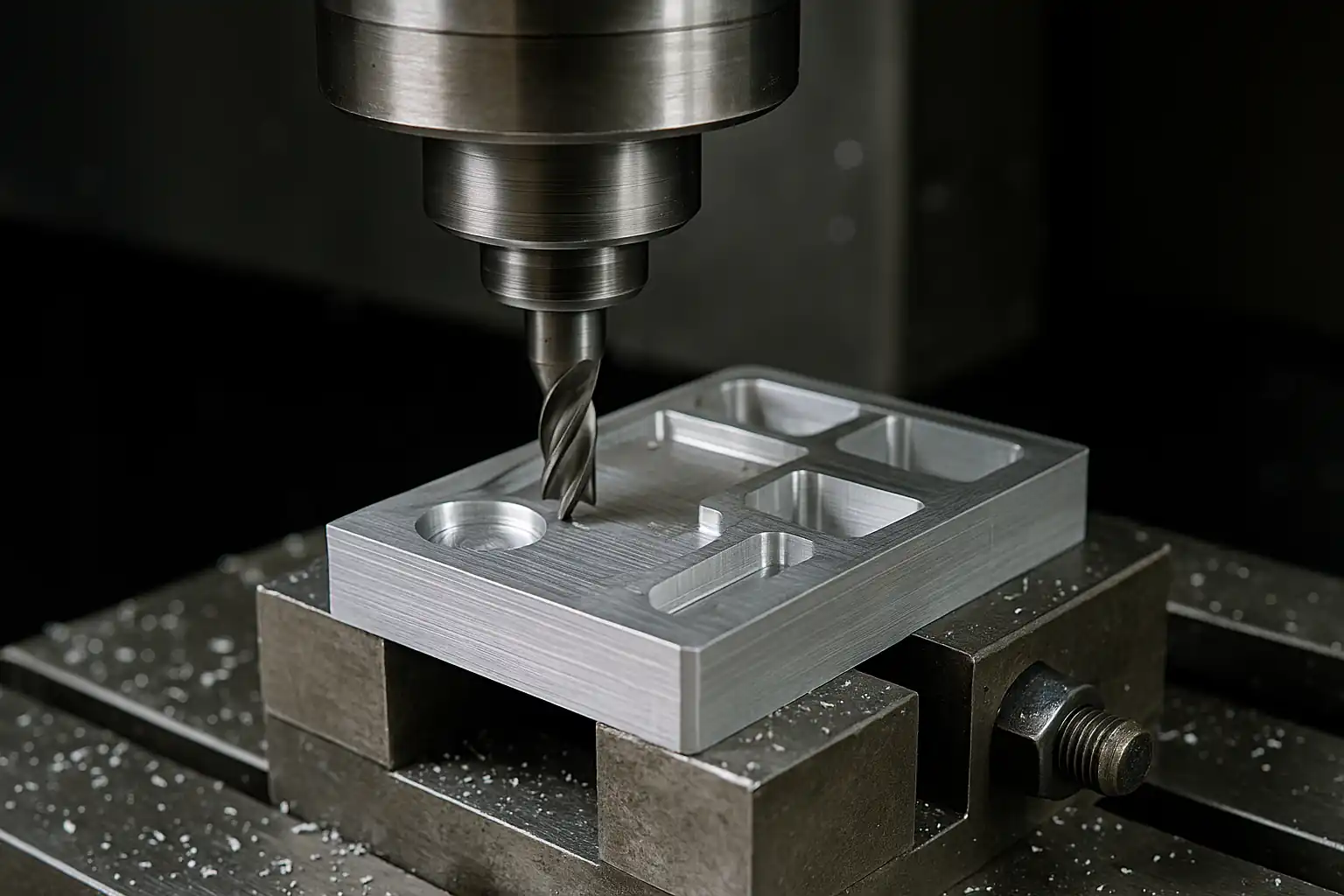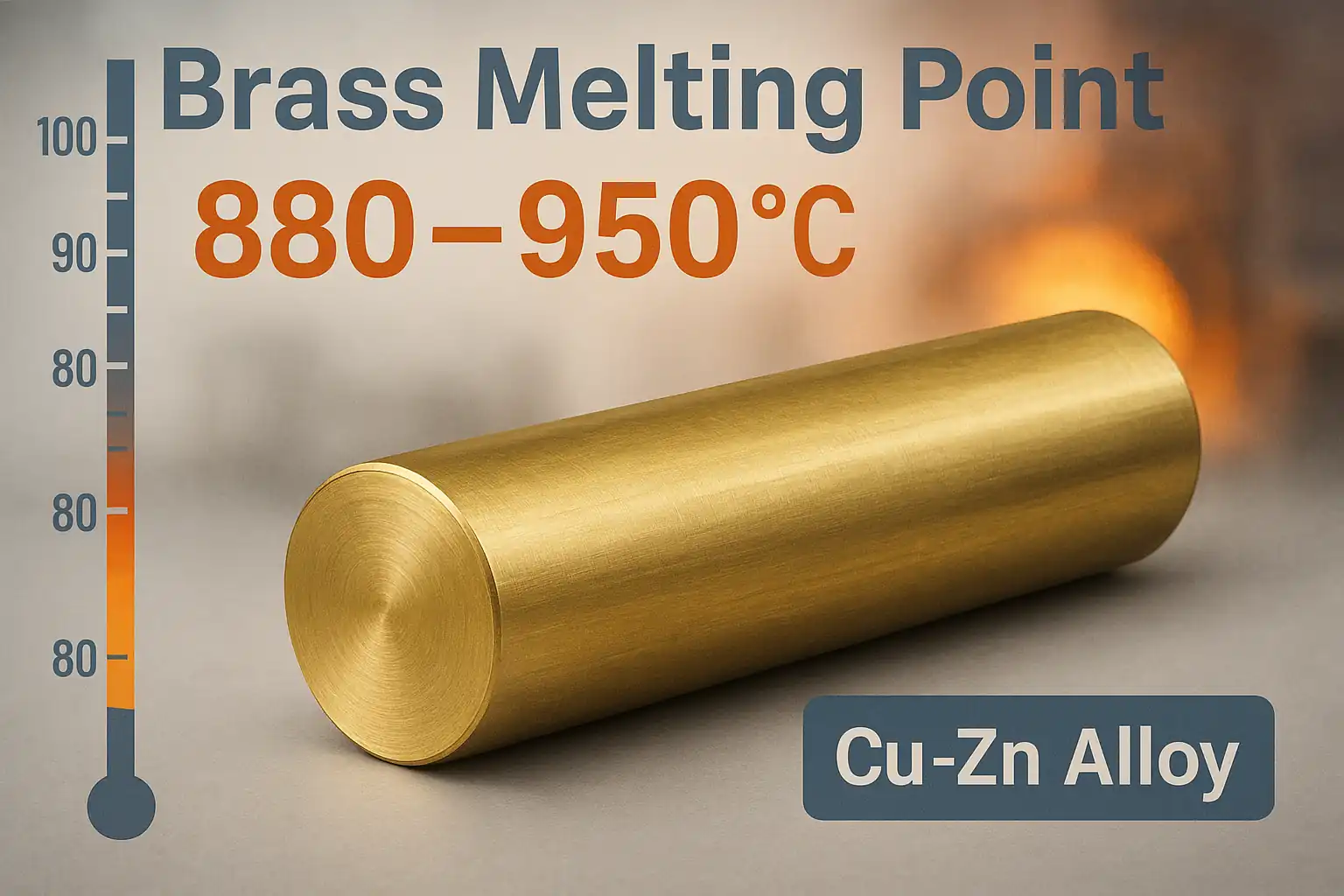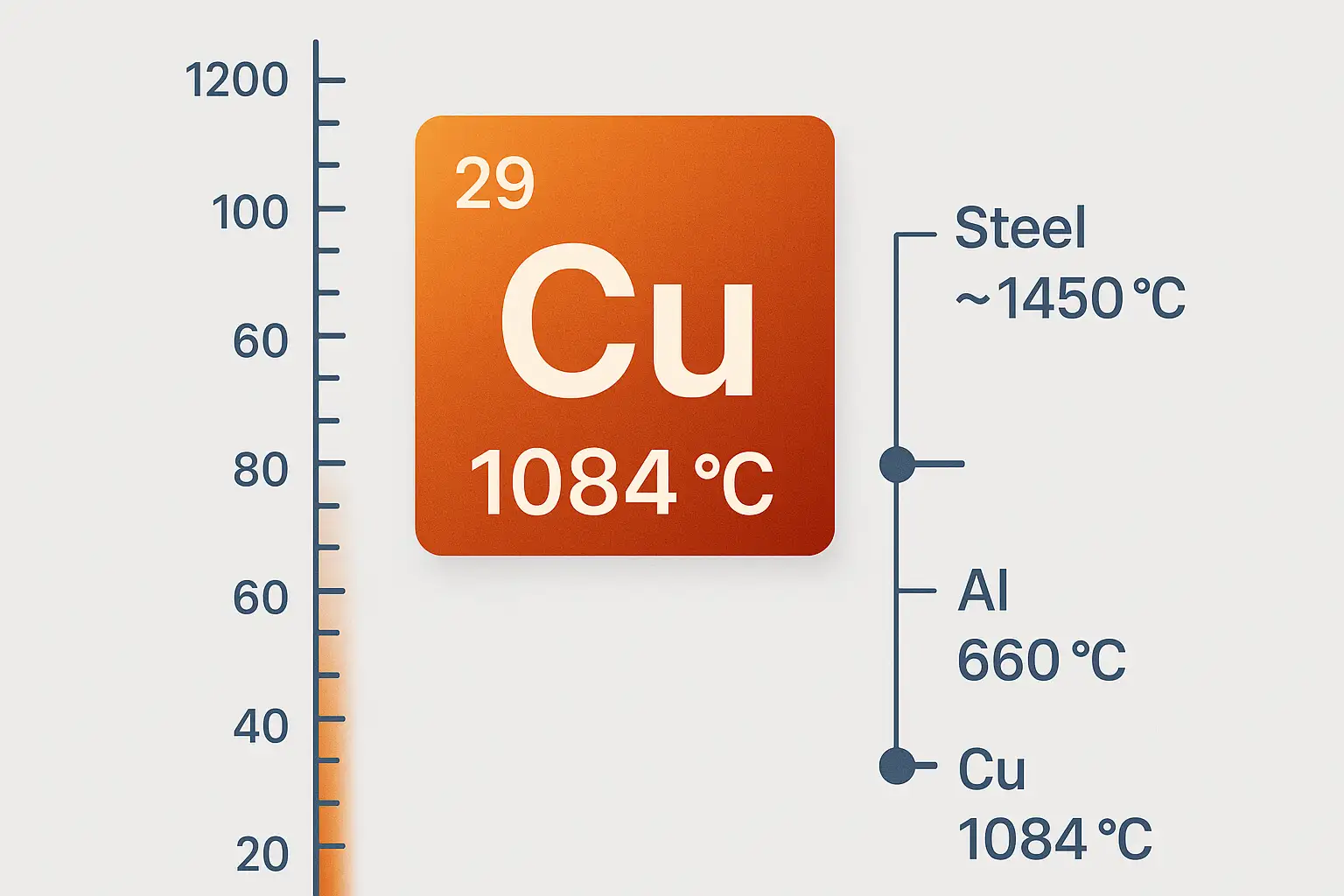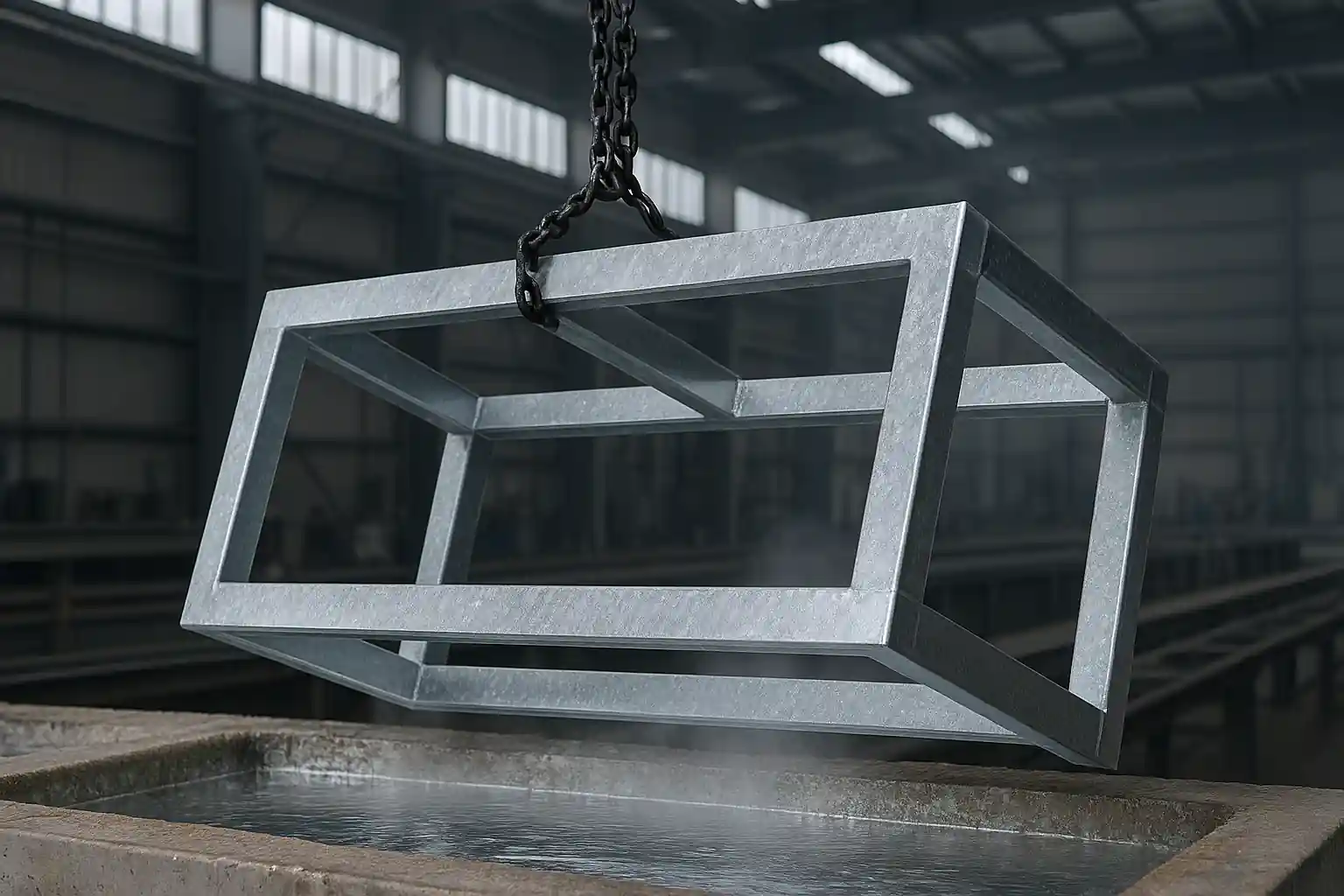In the landscape of modern manufacturing, CNC milling is an indispensable and advanced technology. It uses computer-controlled tools to precisely cut complex and high-quality parts from raw materials. Whether for high-performance aerospace components or tiny medical device parts, CNC milling turns design blueprints into reality with exceptional efficiency.
This guide will provide you with a comprehensive overview of CNC milling’s core principles, main types, common materials, and its wide-ranging applications across various industries, helping you to better understand the technology and make informed decisions for your next project.
What is CNC Milling?

CNC milling is a subtractive manufacturing process. It uses a high-speed rotating multi-point cutting tool to move along a pre-programmed path (G-code) in three-dimensional space, progressively removing excess material from a workpiece to form the desired part shape.
Unlike traditional CNC turning, which rotates the workpiece for cutting, CNC milling primarily uses a rotating tool. This makes it particularly adept at handling asymmetric, multi-curved, and geometrically complex parts.
The CNC Milling Workflow

A typical CNC milling project, from design to final part, generally follows four core steps:
1. Computer-Aided Design (CAD)
-
- This is the first step in the entire process. Engineers use CAD software (such as SolidWorks, AutoCAD, or Fusion 360) to create a 3D digital model of the part. This digital model contains all the geometric information and dimensional tolerances.
2. Computer-Aided Manufacturing (CAM) Programming
-
- CAM software is the bridge between design and manufacturing. A programmer imports the CAD model into the CAM software to develop a machining strategy. This process includes:
-
- Tool Path Generation: Calculating how the tool will move in 3D space to efficiently cut the material.
-
- Cutting Parameter Setting: Setting parameters such as spindle speed, feed rate, and depth of cut.
-
- G-Code Generation: The CAM software translates all machining instructions into the language that the CNC machine can understand—G-code and M-code.
-
- CAM software is the bridge between design and manufacturing. A programmer imports the CAD model into the CAM software to develop a machining strategy. This process includes:
3. Machine Preparation and Fixturing
-
- An operator securely mounts the raw material onto the machine’s worktable. At the same time, the necessary tools from the program are loaded into the tool magazine, and their lengths and diameters are measured.
4. Automated Machining
-
- Once everything is ready, the operator starts the machine. The machine will then automatically perform the cutting based on the pre-set G-code program. The entire process is automated, requiring no manual intervention.
Core Advantages of CNC Milling
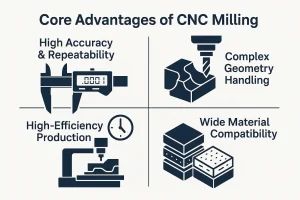
CNC milling has become a top choice for modern manufacturing due to several key advantages:
-
- High Accuracy & Repeatability: The computer-controlled motion system ensures part tolerances in the micron range, and in batch production, every part maintains extremely high consistency.
-
- Complex Geometry Handling: With multi-axis movement, it’s easy to manufacture 3D complex surfaces and internal features that are difficult to achieve with traditional methods.
-
- High-Efficiency Production: Automated operation reduces manual intervention, allowing a single machine to work continuously 24/7, significantly boosting production efficiency.
-
- Wide Material Compatibility: From soft plastics to hard aerospace-grade alloys, CNC milling can process almost any material.
Types and Capabilities of CNC Milling
The most significant capabilities of CNC milling are reflected in the wide variety of cutting operations it can perform, meeting the geometric requirements of different parts. Here are some of the main types of machining operations in CNC milling:
1. Face Milling
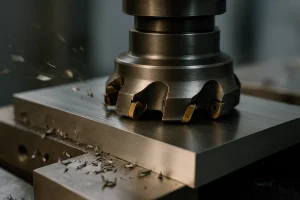
-
How It Works: This operation uses the end face of the milling cutter to remove a large amount of material from a surface, primarily to create a flat, smooth plane.
-
Applications: Commonly used for the initial roughing of a part, providing a flat reference surface for subsequent finishing operations, or for manufacturing planar features.
2. Contour Milling

-
How It Works: The cutting tool moves along the outer or inner contour of a part to create complex 2D or 3D shapes and curves.
-
Applications: Widely used for manufacturing parts with complex curved surfaces such as cams, molds, and turbine blades.
3. Slotting
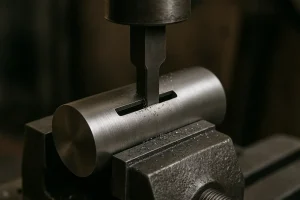
-
How It Works: This operation uses a tool with a width equal to the slot, or by making repeated passes, to cut straight or curved grooves, keyways, and slots into the workpiece.
-
Applications: Often used for creating key slots, guide rails, or ventilation slots on a part.
4. Pocketing
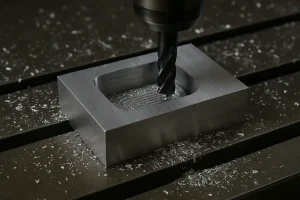
-
How It Works: This operation involves cutting a closed, fixed-depth cavity or pocket inside the workpiece.
-
Applications: One of the most common operations for manufacturing molds, enclosures, heat sinks, and other parts that require the removal of internal material.
5. Drilling & Tapping
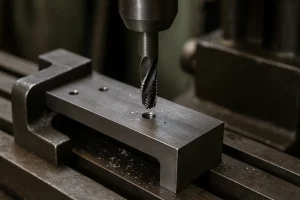
-
How It Works: While milling machines are primarily for milling, they also have the capability for drilling and tapping. Drilling creates a round hole in the workpiece, while tapping cuts internal threads into the hole.
-
Applications: Used for creating mounting holes, threaded holes, and other features that are common in almost all types of parts.
Guide to Common CNC Milling Materials
Choosing the right material is the crucial first step for a project’s success. Every material has unique physical and chemical properties that directly determine the ease of machining, the final product’s performance, and its cost.
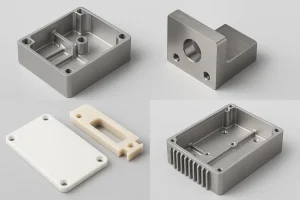
1. Aluminum Alloys
-
- Properties: Lightweight, good thermal conductivity, and high machinability.
-
- Common Grades: 6061 (general purpose) and 7075 (aerospace grade).
-
- Machining Considerations: Requires high-speed cutting and ample coolant to prevent thermal deformation.
-
- Surface Finishes: Often undergo anodizing or sandblasting.
-
- Typical Applications: Drone and aircraft parts, automotive components, electronics enclosures.
2. Stainless Steel
-
- Properties: High strength, corrosion resistance, and high toughness.
-
- Common Grades: 303/304 (common) and 316 (enhanced corrosion resistance).
-
- Machining Considerations: Requires using carbide tools and a low-speed, high-feed cutting approach to manage heat and tool wear.
-
- Typical Applications: Medical surgical instruments, food processing equipment.
3. Engineering Plastics
-
- Properties: Lightweight, good insulation, and wear resistance.
-
- Common Grades: POM (general purpose), PEEK (high performance), and ABS (impact resistance).
-
- Machining Considerations: Poor thermal conductivity requires careful control of cutting parameters to prevent melting or warping.
-
- Typical Applications: Medical device components, electronic enclosures, functional prototypes.
Design for Manufacturability (DFM): Enabling Efficient Production
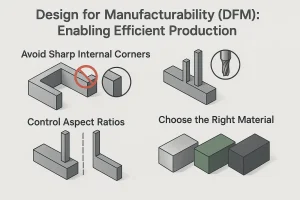
To ensure your parts can be milled in the most efficient way possible, we recommend considering the following DFM principles during the design phase:
-
- Avoid Sharp Internal Corners: Cutting tools are round, so sharp internal corners increase machining difficulty and cost.
-
- Control Aspect Ratios: Thin or long features are prone to vibration during milling, which affects quality.
-
- Choose the Right Material: Select the most suitable material for CNC milling based on the part’s performance needs and your budget.
Quality Control and Inspection
We know that every detail matters. Our quality control processes ensure that every part meets your standards:
-
- First Article Inspection: We perform a full inspection of the first part before beginning a production run to verify the process is correct.
-
- In-Process Inspection: We conduct random checks during machining to ensure dimensional consistency.
-
- Final Inspection: We use high-precision equipment like calipers, micrometers, and Coordinate Measuring Machines (CMMs) to perform a final inspection of all finished parts, ensuring all tolerances are met.
Conclusion
CNC milling is key to turning innovative designs into reality. Whether your project requires a simple functional prototype or a complex component, we have the capability to make it happen.
Ready to bring your design to life? Send us your drawings or project requirements to get a professional quote and technical consultation.
Related Articles
As a professional guide to the CNC machining field, we are committed to providing you with comprehensive technical knowledge. If you are interested in other machining methods, the following articles may be helpful to you:
